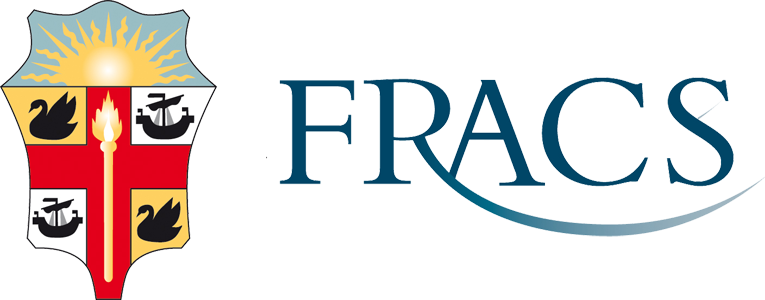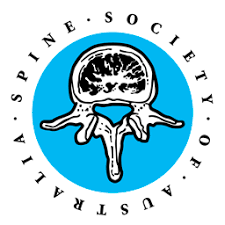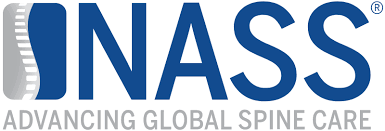Types of Back Pain
Back pain is a common condition that many people experience at some point in their lives. It can be a source of discomfort and interfere with daily activities.
Back pain can arise from various conditions related to the spine and its components, including
- discogenic pain
- facetogenic pain
- sacroiliac joint dysfunction, and
- deformities such as scoliosis and kyphosis.
Discogenic Pain
Discogenic pain is a form of back pain that originates from the intervertebral discs, which are the cushion-like structures situated between each vertebra in the spine. These discs serve as shock absorbers, preventing the vertebrae from grinding against one another. However, various conditions can compromise the integrity of these discs, leading to what we refer to as discogenic pain.
Degenerative Disc Disease
One of the most common causes of discogenic pain. As we age, our intervertebral discs can naturally wear down or degenerate. This process is known as degenerative disc disease. During this process, the discs may lose hydration, becoming less flexible and less effective at absorbing shocks. As the discs wear down, they may also become more prone to inflammation and tearing, which can cause pain. In addition, as the disc degenerates, it can lead to increased movement between the vertebrae and potentially painful bone spur formation.
Internal Disc Disruption
This is another significant cause of discogenic pain. Internal disc disruption is when the inner part of the disc, known as the nucleus pulposus, breaks down or gets damaged. This can cause the nucleus to leak out through fissures in the outer part of the disc, known as the annulus fibrosus. The leaked nucleus material can irritate the surrounding spinal nerves, leading to back pain. Unlike a herniated disc, where a piece of disc material separates from the disc, in internal disc disruption, the material remains contained within the disc structure.
Symptoms
Degenerative Disc Disease and Internal Disc Disruption can cause significant back pain, commonly presenting as a deep ache in the lower back that can sometimes radiate to the hips or thighs. The pain can vary in intensity and may worsen during activities like bending, lifting, or sitting.
Diagnosis and Treatment
Diagnosing discogenic pain often involves a combination of patient history, physical examination, and imaging studies such as MRI or discography. The treatment typically involves non-surgical options like physical therapy, medication for pain and inflammation, and lifestyle modifications. In more severe or persistent cases, surgical interventions might be considered.
Facetogenic Pain
Facetogenic pain, sometimes called "facet syndrome" or "facet joint syndrome," arises from the facet joints, which are small but essential components of the spinal anatomy.
Facet joints are pairs of small joints between and behind adjacent vertebrae in the spine, one pair at each spinal segment. They guide and limit the spine's movement, helping it move smoothly and without damage. They also provide stability, preventing excessive movement that could harm spinal nerves.
Facetogenic pain typically results from injury, inflammation, or degeneration of these joints, often due to ageing or wear and tear. This can lead to facet joint arthritis or osteoarthritis, a common cause of back and neck pain.
Symptoms
Symptoms of facetogenic pain depend on the location of the affected facet joint. For instance, if the problem is in the lower back (lumbar spine), pain, stiffness, or discomfort may be felt in the lower back, buttocks, or back of the thighs. If the affected facet joints are in the neck (cervical spine), the pain may manifest in the neck, shoulders, or upper/middle back. The pain often worsens with activities that involve bending, twisting, or extending the spine, such as lifting heavy objects.
Diagnosis and Treatment
Facetogenic pain can sometimes be confused with discogenic pain because the symptoms can be similar. However, a surgeon can distinguish between them by carefully evaluating symptoms, physical examination, and diagnostic tests such as MRI or a facet joint block.
Treatment for facetogenic pain generally involves conservative approaches at first. This may include physical therapy, chiropractic treatment, medications for pain and inflammation, and lifestyle modifications like maintaining a healthy weight and regular exercise. More invasive options like facet joint injections, radiofrequency ablation, or surgery may be considered if conservative treatments don't provide enough relief. These treatments aim to reduce inflammation, block pain signals, or correct underlying structural problems.
Sacroiliac Joint Dysfunction
Sacroiliac Joint Dysfunction, often abbreviated as SI joint dysfunction, is a condition that leads to chronic discomfort and pain in the lower back and buttocks. The condition originates from the sacroiliac joints, located at the base of the spine, where the sacrum (the last segment of the spine) connects with the ilium (part of the pelvic bone) on each side. These joints are critical in absorbing shock between the upper body, pelvis, and legs.
In SI joint dysfunction, the sacroiliac joints become inflamed or don't move normally due to too much movement (hypermobility) or too little movement (hypomobility). In the case of hypermobility, the joint's excessive motion may damage or strain the surrounding ligaments, leading to discomfort or pain. Conversely, with hypomobility, the stiffness can cause muscle tension and pain due to the lack of natural movement.
Symptoms
SI joint dysfunction symptoms typically include lower back pain, buttock pain, and sometimes pain that radiates down the leg (often mistaken for sciatica). The pain can be aggravated by prolonged standing, stair climbing, bearing more weight on one leg, and other activities that load the pelvis.
Diagnosis and Treatment
SI joint dysfunction diagnosis can be challenging due to the overlap of symptoms with other types of back pain. However, a combination of patient history, physical examination, and diagnostic tests or injections can help confirm the diagnosis.
Treatment for sacroiliac joint dysfunction often involves a mix of physical therapy to improve joint mobility and strengthen muscles, pain-relieving medications, and lifestyle modifications such as avoiding activities that trigger pain. In severe cases or when conservative treatments are ineffective, interventions such as therapeutic joint injections or minimally invasive surgery might be considered. These more advanced treatments aim to relieve pain and restore normal joint function.
Deformity
Spinal deformities such as scoliosis and kyphosis can often lead to back pain due to the abnormal curvatures they introduce into the spine.
Scoliosis
Scoliosis is a spinal deformity characterised by a side-to-side curvature in the spine, causing it to take on an 'S' or 'C' shape. Scoliosis can occur at any age but is most commonly identified during the growth spurt just before puberty. The curvature can range from mild to severe, and in more pronounced cases, it can lead to an imbalance in the body, uneven shoulders or waist, and one hip appearing higher than the other.
Back pain in scoliosis can result from various factors, including muscle imbalances caused by the spinal curvature, degenerative changes in the spine related to scoliosis, or stress on certain joints due to abnormal spinal alignment.
Kyphosis
Kyphosis refers to a forward curvature of the spine, leading to a hunched or rounded back appearance. While a slight curve is normal, an excessive curvature characterises kyphosis. There are several types of kyphosis, the most common being postural kyphosis, typically due to poor posture, and Scheuermann's kyphosis, which often appears during the teenage years.
Kyphosis can cause back pain and stiffness due to the additional strain and tension on the muscles and ligaments of the back from the abnormal curve. In severe cases, kyphosis can affect breathing and lead to other health issues due to the compression on the lungs and other internal organs.
Diagnosis and Treatment
Both scoliosis and kyphosis are typically diagnosed through a physical examination and confirmed with imaging studies like X-rays, CT scans, or MRIs. Treatment approaches can vary widely based on the severity of the condition, the age of the patient, and other health factors. Mild cases often benefit from physical therapy and exercises to strengthen the back muscles and improve posture. Bracing can sometimes halt or slow the curve's progression in growing individuals. Surgery may be considered in severe cases or when other treatments have failed to relieve symptoms. Consult a surgeon to discuss the most suitable treatment options based on your situation.



